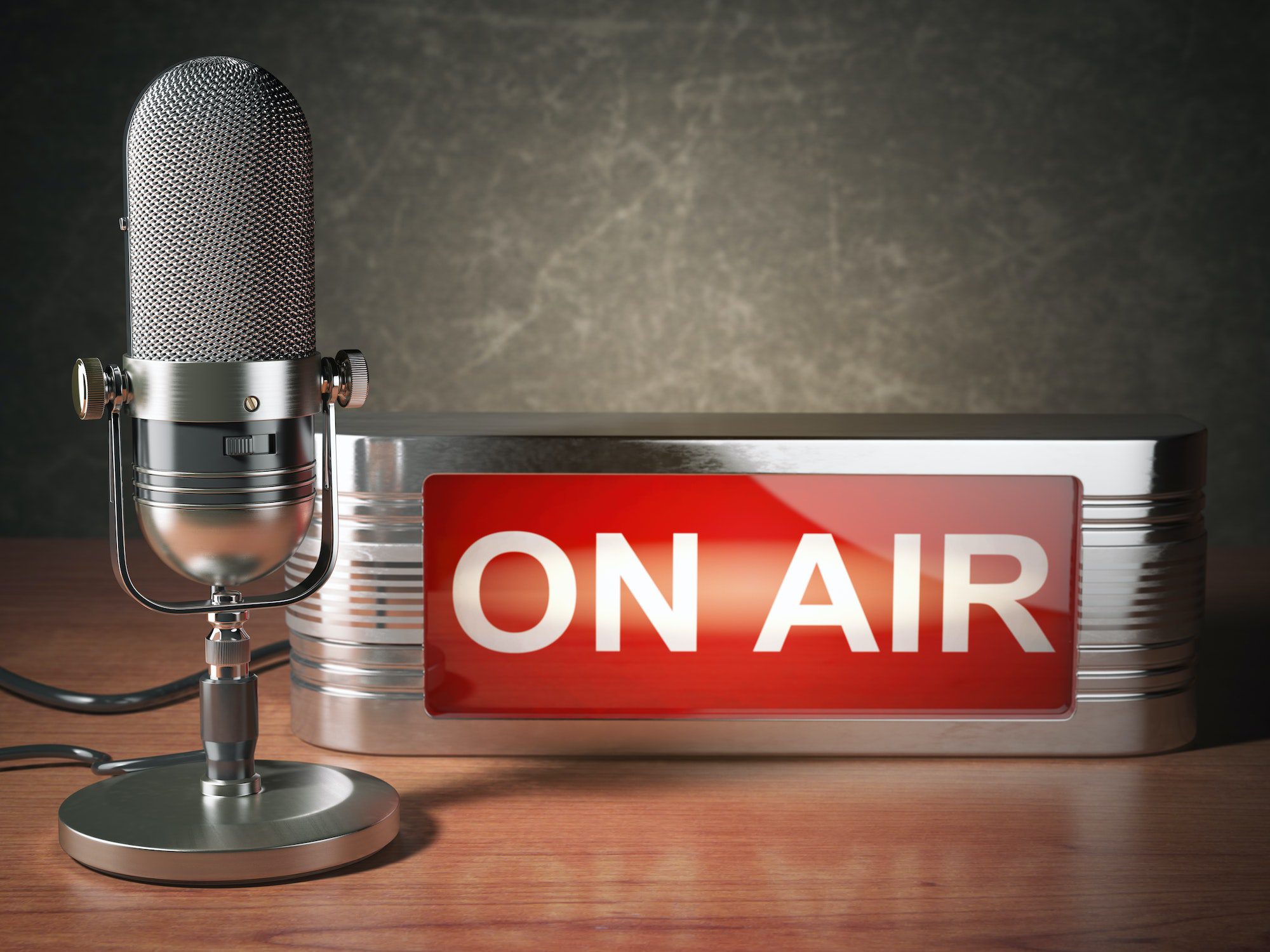Want to get your business to get featured on the radio? Public relations and content strategies are integral components of any successful business. However, utilizing radio as a platform to promote one’s brand or product is often overlooked. While traditional methods such as print media remain viable options for promotion, the impact achieved through targeted radio campaigns should not be underestimated.
By leveraging the reach of radio broadcasting, businesses have the potential to open up new markets and gain valuable exposure for their brands. This article will provide an overview of how businesses can use public relations and content strategies to get featured on the radio.

Establishing Your Media Plan
Creating a successful media plan for your business to be featured on the radio requires careful consideration of various factors. To get started, you must assess your target medium and how best to succeed in that space.
Radio is an effective public relations medium as it can reach many people with minimal effort and cost, making it ideal for businesses looking to increase their visibility and awareness.
Once you have decided upon radio as your chosen PR medium, the next step is creating a press kit that summarizes essential information about your business. This press kit should include core details such as who you are, what services or products you offer, contact information, customer testimonials, press releases and any other relevant materials associated with your organization.
A well-crafted press kit will ensure reporters and editors quickly understand who you are and why they should feature your business on the radio. To maximize the effectiveness of your press kit, use clear language that reinforces key messages about your company without going into too much detail.
Additionally, consider adding multimedia content like photos or videos alongside written material – this offers a more engaging visual presentation which helps capture attention when introducing yourself or promoting newsworthy topics related to your brand. With these elements in place, you’ll be one step closer to getting featured on the radio through PR initiatives.
Creating A Press Kit
- Crafting an engaging pitch involves understanding the media outlets, being concise, and using persuasive language to grab the audience’s attention.
- Gathering and organizing press kit content involves researching the target market and identifying the primary audience.
- Content should be concise and organized to deliver a clear and consistent message.
- Creating an attention-grabbing visual for a press kit should leverage the use of colours, fonts, and images to draw the viewer’s attention.
- Press kits should include a compelling story and a call to action to ensure the message is delivered effectively and efficiently.
- Utilizing the appropriate channels to distribute the press kit ensures the message reaches the intended audience.
Crafting An Engaging Pitch
An effective press kit is essential to get a business featured on the radio. Crafting an engaging pitch targeting radio producers and programs can be a great way to build relationships with potential interviewers.
Businesses need to take time to research their target audience and tailor the content of their pitch accordingly. Radio interviews offer many benefits, such as increased brand awareness, direct access to listenership, and even possible advertising opportunities through radio spots or programs.
By taking advantage of these resources, businesses may gain greater visibility among consumers looking for reliable solutions or services. When crafting the perfect pitch, consider using creative language that resonates with your intended audience; this could include references to current trends or industry-specific jargon when appropriate.
Ultimately, establishing trust between producer and sender is vital in creating successful connections that lead to getting more businesses featured on the radio.
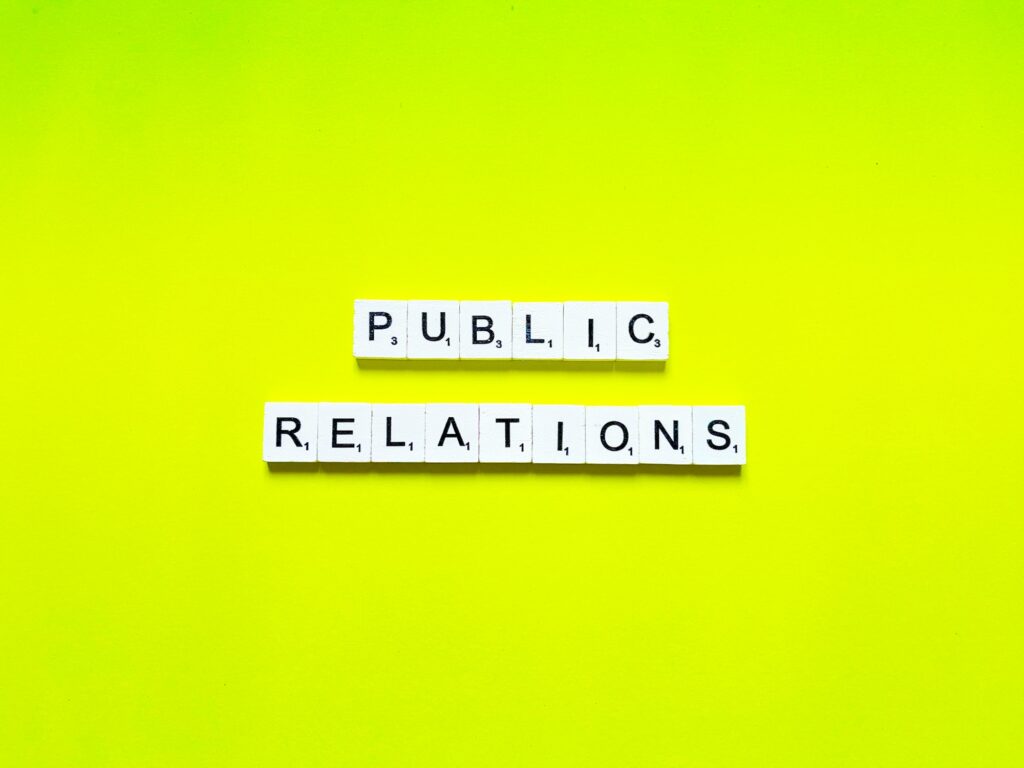
Gathering And Organizing Content
Content gathering and organization are crucial steps in creating an effective press kit for radio interviews.
Audiences should be identified before content is gathered so that the messaging can be tailored to them accordingly.
Content may include promotional materials such as logos, bios, or photographs; product descriptions and features; a list of target media channels like radio stations, online radio or podcast interview sites; press releases and other relevant news stories; customer testimonials and reviews; etc.
Once all the content pieces are collected, they must be organized into logical categories that make sense when presented to potential hosts of radio shows or podcast interviews.
Ensure the information provided is relevant, engaging, timely, and valuable to audiences across different channels – especially those on radio stations and podcasts.
The key to success is understanding what resonates with your intended audience while providing meaningful insight they can use immediately.
Understanding your audience involves careful planning around topics discussed during interviews, making sure every detail has been considered from start to finish.
Creating An Attention-Grabbing Visual
Creating an attention-grabbing visual is part of creating a successful press kit.
Visuals such as images, videos, and graphics can capture the audience’s interest in ways that words alone cannot.
Production costs should be considered when selecting voice actors or high-quality photographs. The right voice actors contribute to creating compelling visuals for radio interviews or podcasts,
Different advertising methods, such as display ads or digital campaigns, can promote specific messages about the discussed business.
For example, incorporating logos into visuals helps to raise brand awareness and strengthen its association with the content being presented; this, in turn, can help engage audiences more effectively while delivering the meaningful information they need.
Ultimately, by leveraging various forms of media in addition to verbal communication during radio interviews or podcasts, businesses can reach their target audiences on multiple levels–eventually leading to tremendous success.

Crafting Compelling Press Releases
To build on the groundwork of a successful press kit, crafting compelling press releases is essential to getting your business featured on the radio. While it may seem daunting, writing effective PR can be easy with some preparation and practice; like any good storyteller, you need to know how to hook an audience’s curiosity.
When creating your PR for broadcast media, it’s essential to consider the style of radio broadcasting that best suits your company’s message or product. You’ll want to research radio advertising cost options and appropriate radio ads and hosts who might be interested in featuring your brand.
Additionally, identifying suitable radio stations is crucial- the trick here is not only finding one that caters to your target demographic but also targeting those who offer promotional packages at a reasonable price point.
Crafting persuasive yet succinct press releases that entice listeners will help them get noticed by major networks. With each sentence needing to make its mark quickly, concisely summarizing why people should care about what you have to say while paying attention to industry trends are critical pieces of this puzzle.
Moreover, ensuring each release has its unique angle to stand out from competitors helps give even more leverage when negotiating ad space. If done correctly, these efforts should pay off and lead inroads towards having your business finally grace the airwaves!
Identifying The Right Radio Stations
- Research potential radio stations to understand which will reach the desired target audience.
- Effective PR strategies require research into the demographics of the radio station, such as its location, the type of programming, and the age of the average listener.
- Additionally, understand the target audience for the business. This research should include looking into the lifestyle and interests of the target audience.
- By understanding both the radio station and the target audience, it is possible to create an effective PR strategy that will help ensure the business is featured on the right radio station during the perfect time slot.
Researching Radio Stations
Only think for a minute that your business needs to be on the most popular radio stations to reach a sizeable ideal audience. Researching appropriate stations is critical for getting your business featured on the radio.
With so many broadcast and podcast-based options available, from terrestrial radio and satellite services like SiriusXM to streaming internet radio through applications like Spotify, narrowing down what kind of station would best promote your brand can take time and effort.
The first step should always involve identifying and understanding your target audience; this will help you decide which mediums will most likely reach them.
Once you know who you’re targeting, it’s time to explore different types of outlets – look for reputable local stations that feature interviews or other opportunities in which they can promote your business, consider national programs with a focus on entrepreneurship that may be willing to feature success stories, research whether any podcasts might fit into your marketing strategy – the possibilities are endless!
Researching radio stations takes both dedication and creativity. Still, with hard work and perseverance, businesses large and small can see their dreams come true when featured on the airwaves.
Understanding Target Audience
First, one’s target audience must be understood to identify the proper radio stations for a business. Knowing their demographics, such as age, gender, and location, can help narrow down which media outlets will most likely reach them effectively.
Audience size should also be considered when selecting appropriate radio stations; one must weigh the benefits of large versus small audiences to the objectives of their campaign.
Lastly, knowing your target market and demographic will enable you to choose an outlet that caters to these individuals. With this information, businesses can better decide what kind of station would best promote their brand and meet their marketing goals.
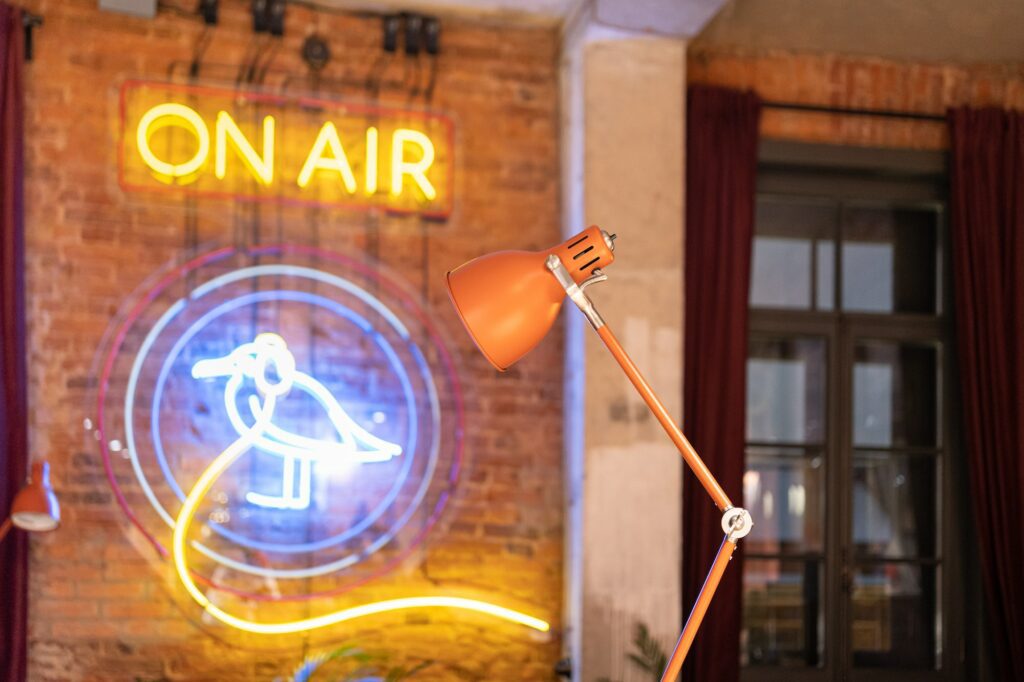
Building Relationships With Radio Hosts
Building relationships with radio hosts is essential to getting your business featured on the radio. From interviews to advertisements, connecting with the host can make all the difference in creating successful and impactful audio content.
One way to form these connections is through social media. Following their updates, engaging with their content, and leaving comments or direct messages can help you stay connected and build rapport before pitching your product as a potential feature.
Additionally, it’s essential to know what type of voice the host prefers for ads or spots—including character voices or celebrities—and the best time to air them. Doing research beforehand will give you an edge when speaking to them about featuring your business on the show.
Making sure that both sides are informed and comfortable leads to better results and more meaningful exchanges between yourself and any potential radio hosts. Keeping this relationship strong over time helps foster community support for your business which could lead to increased sales and engagement overall.
With thoughtful planning and consideration, you can create mutually beneficial opportunities for each other. Taking steps towards reaching out to radio producers is critical to making this happen successfully.
Reaching Out To Radio Producers
Are you ready to get your business featured on the radio? Of course, you are, but how do we make it happen? It’s time to put on our public relations writer hats and dive into the radio industry’s deep end.
Let us begin by examining some practical methods for reaching out to radio producers:
- Utilize Existing Relationships: If you have any friends or colleagues that know anyone in the radio industry, use them as resources! Connections can be invaluable when pursuing interviews with radio personalities or reporters.
- Take Advantage of Networking Opportunities: Attend relevant events such as conferences, seminars, podcasts or webinars within the radio sector. Attending these events is an excellent way to introduce yourself and establish relationships with key players in the field.
- Create Professional Materials: Ensure all emails, press releases, audio clips, videos, and other materials sent to potential interviewers appear well-researched and professional. It’s essential to demonstrate why you would be a great guest for their program!
We’ve discussed three ways to get your foot in the door of the radio industry – now let’s move on to utilizing social media platforms to expand reach even further.
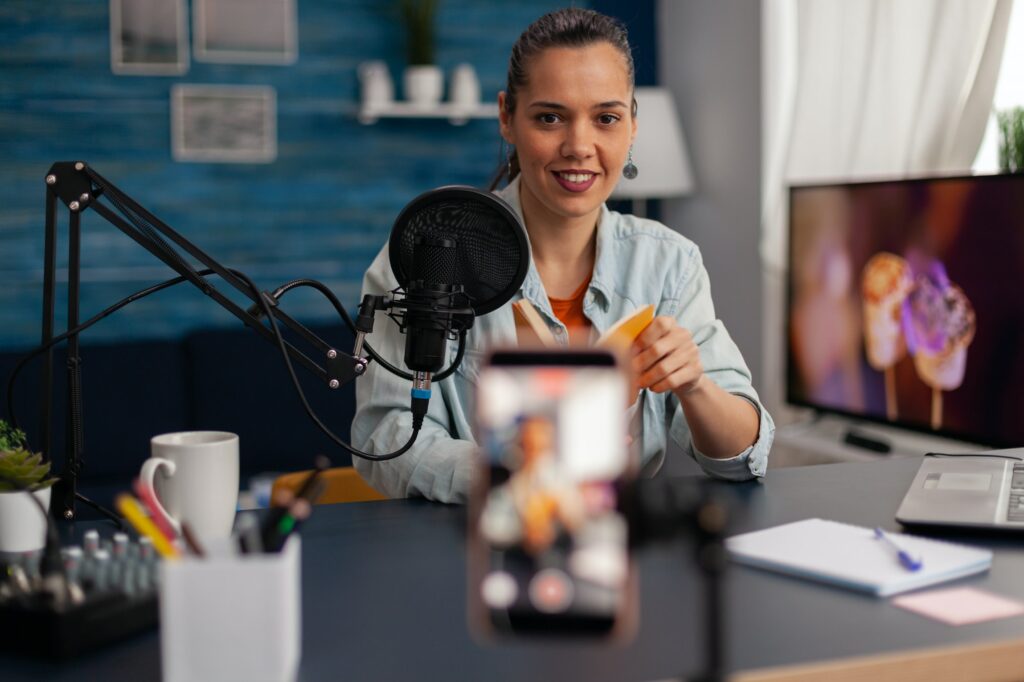
Utilizing Social Media Platforms
Social media platforms are powerful tools for businesses to promote themselves and get featured on the radio. Create an effective social media marketing strategy by considering the type of content that will be released, when it should be removed, and how it can reach a wider audience.
For instance, utilizing event-based postings can help draw attention from potential customers who may have yet to hear about your business. Additionally, creating campaigns or running ads designed explicitly for radio helps capture the average person’s attention in ways that other forms of advertising might miss.
Radio ad campaigns are excellent choices because they provide opportunities to engage with listeners while also introducing them to something new. When using radio ad campaigns as part of a social media marketing strategy, several vital elements must be considered, such as the length of advertisement time purchased, frequency of airing times chosen, target demographic specified by station selection, and more.
Ensuring all these details come together for the campaign to yield successful results is vital. Moreover, each element must fit within budgetary constraints to achieve maximum effectiveness without breaking the bank.
With careful planning and creative strategies tailored toward reaching larger audiences beyond those already familiar with your brand, you can craft an impressive online presence and feature your business on various types of radio ads like podcasts or commercial spots. Through this systematic approach and leveraging existing relationships with influencers across multiple networks, you can build positive momentum towards achieving desired outcomes over time.
Now let’s look at ways we can measure the effectiveness of our campaign objectives.
Measuring The Effectiveness Of Your Campaign
Measuring the effectiveness of a radio campaign can provide invaluable insights into how successful it has been. As such, businesses need to assess the performance of their radio campaigns by considering various metrics.
Email and other forms of digital tracking should be incorporated alongside radio advertisements, commercials and broadcasts to gain an accurate picture of results. Using both online and offline channels provides business owners with more comprehensive data, which can be used to measure success accurately.
This kind of analysis allows PR professionals to examine the return on investment (ROI) from any campaign or broadcast and identify areas that could benefit from improvement or development. Additionally, using analytics tools like Google Analytics will enable marketers to view detailed information about site visitors through the radio broadcast.
By assessing the different metrics associated with a radio campaign, businesses can make informed decisions about future strategies and investments in advertising. With access to this valuable data, companies can refine their approach and tailor content to achieve their goals – increasing brand awareness or driving sales conversions. Ultimately, this helps ensure maximum ROI when investing in radio-based marketing efforts.
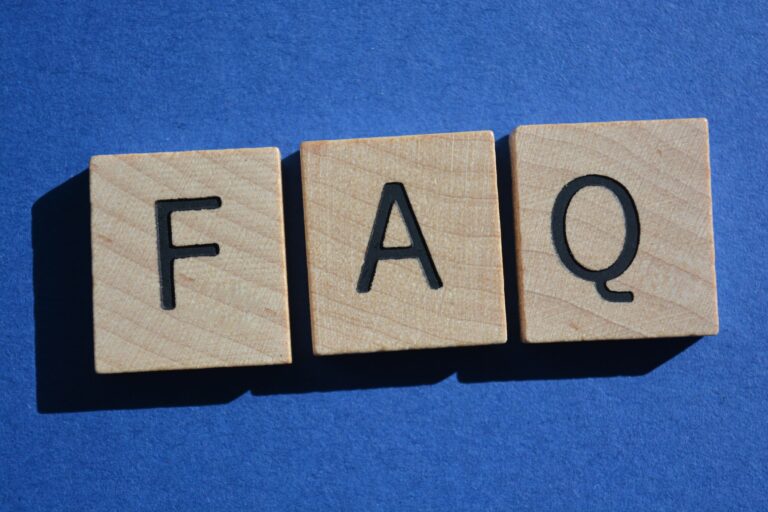
Frequently Asked Questions
How Much Does It Cost To Get Featured On The Radio if I Want to Pay?
One of the benefits of radio ads is that radio commercial ad packages offer the ability to run multiple ads for a day, week or month. The repetition increases the effectiveness of a good ad over time.
Reaching a large audience through radio can be like unlocking the door to business success. However, it is vital to consider the cost of getting featured on the airwaves to ensure that this opportunity is not an expensive misstep.
The price of a radio promotion will vary depending on the type of radio ad and factors such as station reach and market size. Averages radio ad costs differ significantly between $5-$2,000 per spot, with some discounts available for bulk purchases or long-term campaigns. The considerable price variation can be credited to the availability of online radio.
It’s also worth considering additional fees for production costs and other services associated with broadcast promotions.
Evaluate these costs against the potential benefits to decide whether investing in radio promotion is right for your business.
How Long Does It Take To Get A Response From Radio Producers?
Reaching out to radio producers for the potential of having a business featured can be daunting.
The response time depends on many factors, such as how busy the producer is and if they are actively seeking new content.
It usually takes several weeks or even months to receive any reply.
It is important to remember that building relationships with radio producers may take some time but remain persistent in your communication efforts.
What Are The Best Strategies To Build Relationships With Radio Hosts?
A successful strategy for building relationships with radio hosts requires understanding the content that is most likely to be featured on their show.
It is vital to research topics that align with the host’s interests and expertise and develop a rapport by engaging in conversations related to those particular topics.
Additionally, it can be beneficial to create relevant and exciting stories or press releases that will draw hosts’ attention and provide them with helpful information about your business.
Finally, offering exclusive interviews or access to unique experiences can act as incentives when appealing to radio hosts.
How Can I Make Sure My Press Releases Are Engaging?
Crafting engaging press releases that will capture the attention of radio hosts requires skill and knowledge. A comprehensive understanding of public relations and the ability to create compelling messages for different audiences is necessary.
Writing in a style that resonates with your target audience’s specific needs and desires can be beneficial when crafting a press release; this could include integrating storytelling elements such as vivid language, anecdotes, or personal stories that draw readers in.
Utilizing relevant images or multimedia content within the release can also engage listeners.
Finally, staying up-to-date on industry trends and keeping track of current events related to your topic is essential for creating effective press releases for radio hosting purposes.
How Do I Measure The Success Of My Pr Campaign?
Measuring the success of a public relations (PR) campaign is essential for understanding if it has been effective.
By tracking key performance indicators, such as changes in brand recognition and web traffic, businesses can gain insight into how their PR efforts are translated by their target audiences. This data should be collected before, during and after the campaign to provide insights on what works best to achieve desired results.
Additionally, customer feedback surveys can help assess whether the business’s message was correctly received. Ultimately, thoughtfully assessing these metrics allows companies to identify areas that need improvement and adjust strategies accordingly.
Wrapping it Up
Broadcasting on the radio is practical and cost-effective to get your business featured. It can be a powerful tool for building relationships with potential customers, reaching your ideal audience demographics, creating brand awareness, and increasing sales.
With careful planning, strategic outreach, and engaging press releases, businesses can measure their success in reaching a broad audience through radio. Though it requires patience and dedication to establish connections with producers and hosts, utilizing this channel can reach people who may not otherwise hear about your product or service in both larger and small niche markets.
By effectively understanding how to use radio as part of a PR campaign, companies can make meaningful connections that will benefit them financially and culturally. Symbolic of its lasting impact, radio remains one of the most enduring forms of communication today. It is often overlooked as a great strategy to support a digital marketing strategy.
